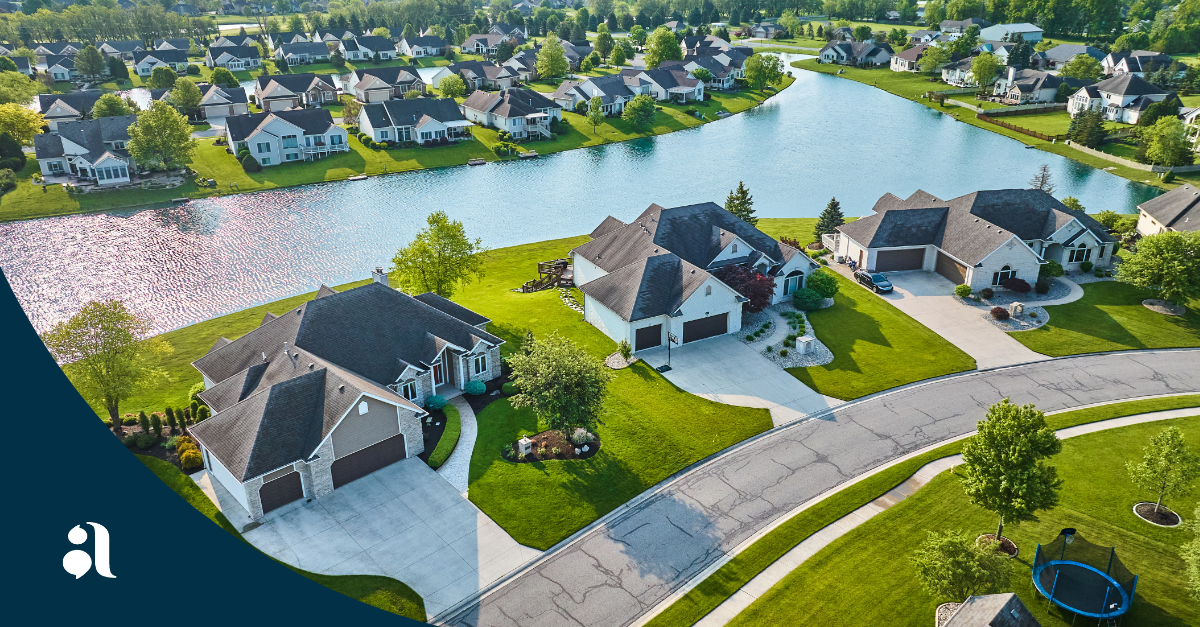
The Value of a Lifestyle Management Platform for Master Planned Communities
The Value of a Lifestyle Management Platform for Master Planned Communities
Master planned communities were designed to offer more than homes—they offer curated lifestyles. Wide sidewalks lead to central green spaces. Clubhouses, swim centers, and fitness facilities become places of connection, not just amenities. But behind these polished offerings is a growing complexity that demands a new kind of solution—one that turns logistics into lifestyle, and friction into flow.
That’s where a lifestyle management platform for master planned communities becomes essential.
These platforms are no longer a luxury or a novelty. They’re the digital nervous system of the modern community, designed to streamline communications, manage events, orchestrate wellness programs, and provide smart access—all through a unified interface. With a trusted platform like Alosant, communities don’t just function—they thrive.
Imagine This:
A resident, Grace, opens her branded community app on a Saturday morning. She sees an alert: “Pickleball Clinic for Beginners—Today at 10 AM.” She taps “Reserve Spot,” then books a swim lane for later that afternoon. Her daughter is already enrolled in next week’s art-focused summer camp, which she signed up for last month through the same app. Everything is at her fingertips. It feels effortless—and that’s the point.
Key Benefits:
- Centralized event management for both staff and residents
- Real-time amenity booking with age-specific programming
- Personalized resident communications based on preferences
- Streamlined access control tied to bookings
- Branding that reflects your community—not your software vendor
As communities grow and expectations rise, the way we manage lifestyle must evolve. A lifestyle management platform isn’t just a backend tool—it’s an experience enhancer, a digital concierge, and a catalyst for community engagement.
To truly appreciate why these platforms have become indispensable, we first need to understand how the lifestyle expectations of today’s residents—and the operational demands of modern communities—have changed.
Why Master Planned Communities Need Smart Lifestyle Tech
The vision of a master planned community isn’t just about architecture—it's about the lived experience. Walking paths that lead to meaningful destinations. Gathering spaces that foster neighborly bonds. Amenities that cater to every stage of life. But this vision can easily unravel when logistical friction stands in the way of daily enjoyment.
Paper-based sign-ups. Missed emails. Crowded calendars. Overbooked amenities. These aren’t just operational hiccups—they erode the resident experience. That’s why modern communities require something more intelligent and intuitive: a lifestyle management platform built to meet residents where they are—on their devices, in real time, with seamless usability.
The reality:
- Multi-generational demands – A retiree wants water aerobics; a teenager wants eSports tournaments; a young couple wants parenting meetups.
- High-expectation residents – Today’s community members expect the same user experience from their neighborhood app that they get from Uber or Amazon.
- Complex coordination – With hundreds of events, classes, and bookings, even the best team can be overwhelmed without tech that scales with them.
Maria, the lifestyle director of a 2,200-home community in Arizona, used to spend 40% of her week handling email RSVPs. Now, with a platform that automates registration, communicates directly to residents based on age group, and integrates with the facility access system, she spends that time planning new events instead. The platform didn’t replace her—it empowered her.
Let’s break down what these platforms actually offer. The features behind the interface are what transform an average resident experience into an exceptional one.
Key Features of a Lifestyle Management Platform
Every lifestyle management platform claims to offer efficiency—but the right platform goes beyond. It becomes the hub of resident life. It’s where memories are made, activities are planned, and trust is built.
Alosant’s platform is structured around the real needs of community teams and residents alike. These aren’t features built in a vacuum—they’re built with you, based on insights from leading communities.
Managing Events with Ease
Event planning is the heartbeat of lifestyle. But manually tracking RSVPs or fielding emails for yoga class sign-ups? That’s yesterday’s model.
With Alosant, event management includes:
- RSVP management with waitlist logic
- Automated event reminders and push notifications
- Age-restricted registration (e.g., adults-only wine nights)
- In-app event feedback
For an annual community carnival, staff can launch an event page with tiered RSVP slots for families, volunteers, and vendors. Residents see the listing, reserve their spots, and receive a digital ticket with access control—no paper, no stress.
But it’s not just about the big events. The platform must be equally powerful when it comes to everyday programming.
Handling One-Time vs Recurring Events
Recurring events like weekly Zumba or monthly HOA town halls need a different management approach than one-off celebrations or seasonal programs.
What the right platform should offer:
- Templates for recurring events, with the ability to configure
- Adaptive grouping based on event attendance, so teams can segment attendees by their interests.
A summer “Sunset Series” concert repeats every Friday in July. Rather than creating each event manually, the lifestyle coordinator uses a recurring template. Residents can RSVP for one or all performances with a single tap. Plus, automated cancellations allow waitlisted residents to join in.
As we shift into the warm months, summer camps become central to many families’ lives. And they require far more than a calendar slot.
Place-Based Management: Fitness Centers, Swim Clubs
Physical amenities are among the biggest draws of a master planned community. But unmanaged, they can become flashpoints—overcrowded pools, gym misuse, or unfair bookings.
Alosant enables place-based control by offering:
- Real-time availability of amenity spaces
- Booking rules and limited around priority time slots
- Integration with access control for time-based access
- Data on amenity usage patterns to know when to scale
With the foundation laid in places and events, let’s zoom in on a growing resident demand—wellness.
Lifestyle Management Platform for Wellness
Wellness has evolved from a trend into a core pillar of community design. Residents now expect fitness, mental well-being, and lifestyle enrichment to be baked into their daily environment—not bolted on.
Alosant’s wellness tools empower:
- Fitness class reservations (e.g., HIIT, yoga, meditation)
- Event series like “Wellness Wednesdays” with holistic focus
- Program segmentation by user groupings (e.g., seniors vs Gen Z)
- Branded challenges (e.g., Step Count Competitions)
A Florida community used their app to launch the annual ‘Community Olympics,’ inviting residents to register and join individual competitions. The app allowed organizers to cap participation for each event and group participants by skill level. Hundreds of residents turned out to compete, cheer each other on, and follow the entire experience through the app.
Now that engagement is thriving, security and access control ensure everything runs safely and smoothly.
Access Control and Security in Lifestyle Platforms
Physical access is often where analog systems break down—duplicate fobs, check-in lines , or unsecured clubhouses. But with a digital lifestyle management platform, access becomes smarter, safer, and more scalable.
Alosant integrates with access systems to provide:
- Check-in right from a user’s mobile device
- Access tied directly to bookings (no booking, no entry)
- Restricted hours for specific user groups (e.g., “Teen Fitness Hours”)
- Emergency override and timely notifications
Tom reserves the pickleball court for Tuesday night. When he arrives, his mobile device unlocks the facility door. No phone? No entry. His friends forgot to register—so they sign up on-site, and the system logs them in.
With all the operational pieces in place, what truly differentiates a community is how personalized and human the experience feels.
Creating Community Belonging with Technology
Technology should not replace community—it should amplify it. Platforms like Alosant connect real people to the real places in their lives by removing friction and enhancing experience.
Ways the platform nurtures belonging:
- Resident directories with interests, clubs, and events their attending
- Smart suggestions on the home feed
- Interest-based social groups and clubs
- Curated push notifications (e.g., “Your social club is getting together Friday!”)
For example, Eli and Priya moved into their new home two months ago. Through the app, they discover “New Resident Social,” RSVP, and meet three families with kids the same age. By week’s end, they’ve joined a community soccer group—introduced through an in-app suggestion.
Of course, not all platforms are created equal. That’s why your choice of partner matters.
Built With You: Why Alosant Is Different
Alosant isn’t software you license—it’s a partner you collaborate with. Our platform was built from the ground up with communities, not just for them. That’s why every feature feels intuitive, every workflow reflects real challenges, and updates come from community feedback.
What makes Alosant different:
- Custom onboarding with your team’s input
- Solutions tailored to your brand and goals
- Regular optimization calls
- White-label branding that puts your name, not ours, front and center
Even more, we don’t stop at implementation. We stay with you to measure success, iterate, and grow.
One App. One Login. Every Step of Community Life—Seamlessly Connected.
Alosant delivers a single, unified app designed to support residents from their very first visit to everyday life in the community. Prospective buyers feel informed. Residents feel engaged. No juggling multiple tools or managing scattered logins—just one intuitive platform that powers the entire journey, from first impression to long-term connection.
Amplifying Your Brand—Not Ours
Your community is unique. Your app should reflect that.
Unlike cookie-cutter vendors, Alosant ensures your brand is what residents see and experience—not ours. From color palette to content tone, everything is tailored to your identity.
Before Alosant, a Florida developer used a third-party app with the vendor’s logo and branding. Residents were confused when they received a notification for the wrong community.? With Alosant, the switch brought clarity, unity, and stronger brand equity.
Conclusion: The Trusted Path Forward
Master planned communities are complex, living organisms. They need a digital backbone that supports connection, enhances daily life, and adapts as people grow. A lifestyle management platform for master planned communities is no longer optional—it’s essential infrastructure.
With Alosant, you’re not adopting software. You’re partnering with a team who understands that lifestyle isn’t just logistics—it’s legacy.
FAQs
What is a lifestyle management platform?
It’s a digital system that manages community events, amenities, wellness, communications and access—built to enhance the resident experience.
How does it help manage events?
It centralizes scheduling, RSVPs, reminders, and even access control—making events smooth for both staff and residents.
What’s the difference between recurring and one-time events?
Recurring events follow a pattern (e.g., yoga every Monday), while one-time events require more promo and logistics. The platform supports both.
Is wellness part of the platform?
Yes, from fitness class bookings to interactive trail maps —all managed in-app.
What makes Alosant different from other platforms?
Alosant builds with you, not for you. Every feature is tailored to your community, and curated to each stage of a resident’s journey.
Further Reading
- National Association of Home Builders (NAHB) – Community & Lifestyle Trends
- Community Associations Institute (CAI) on Amenity Management
- Yardi: Tech Trends + Innovations
- Master-Planned Communities Embracing Next Generation of White-Labeled Mobile Apps



